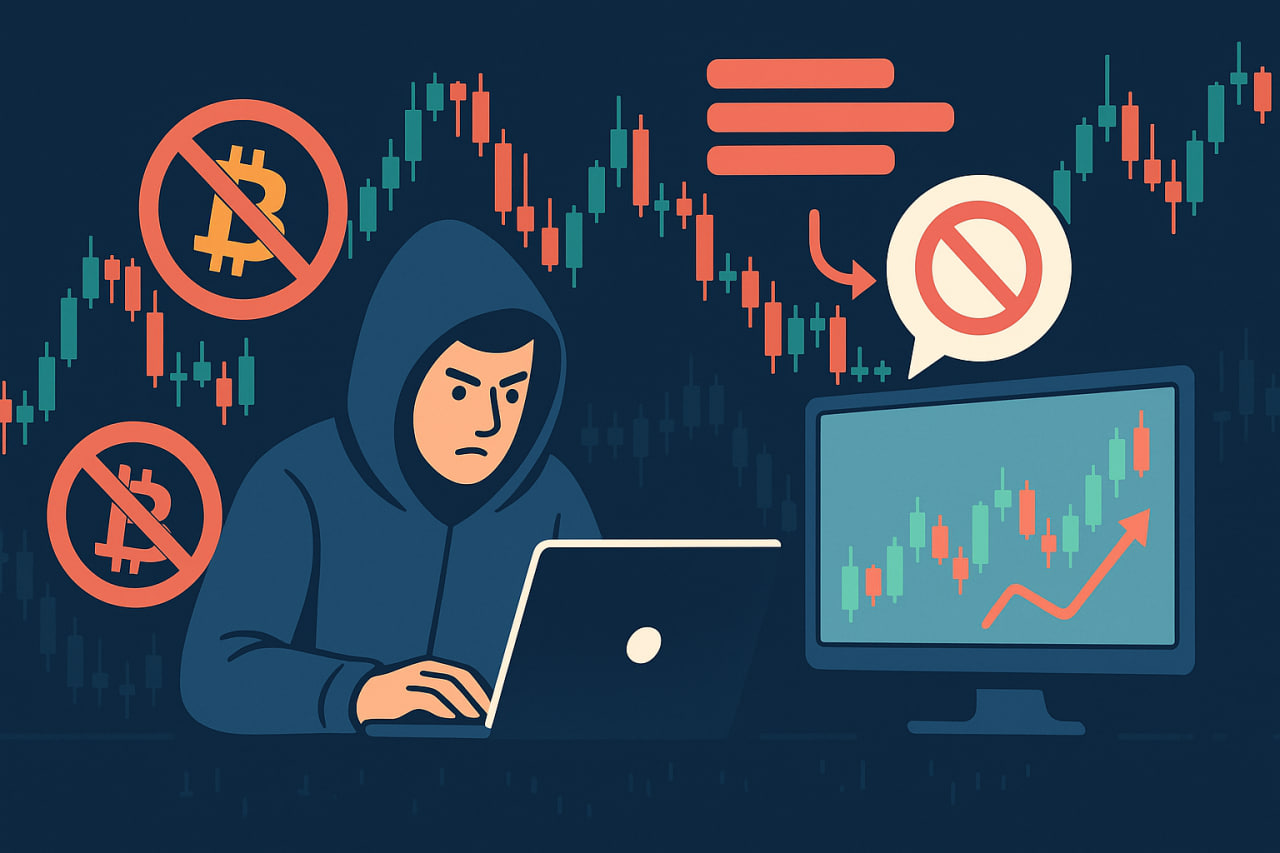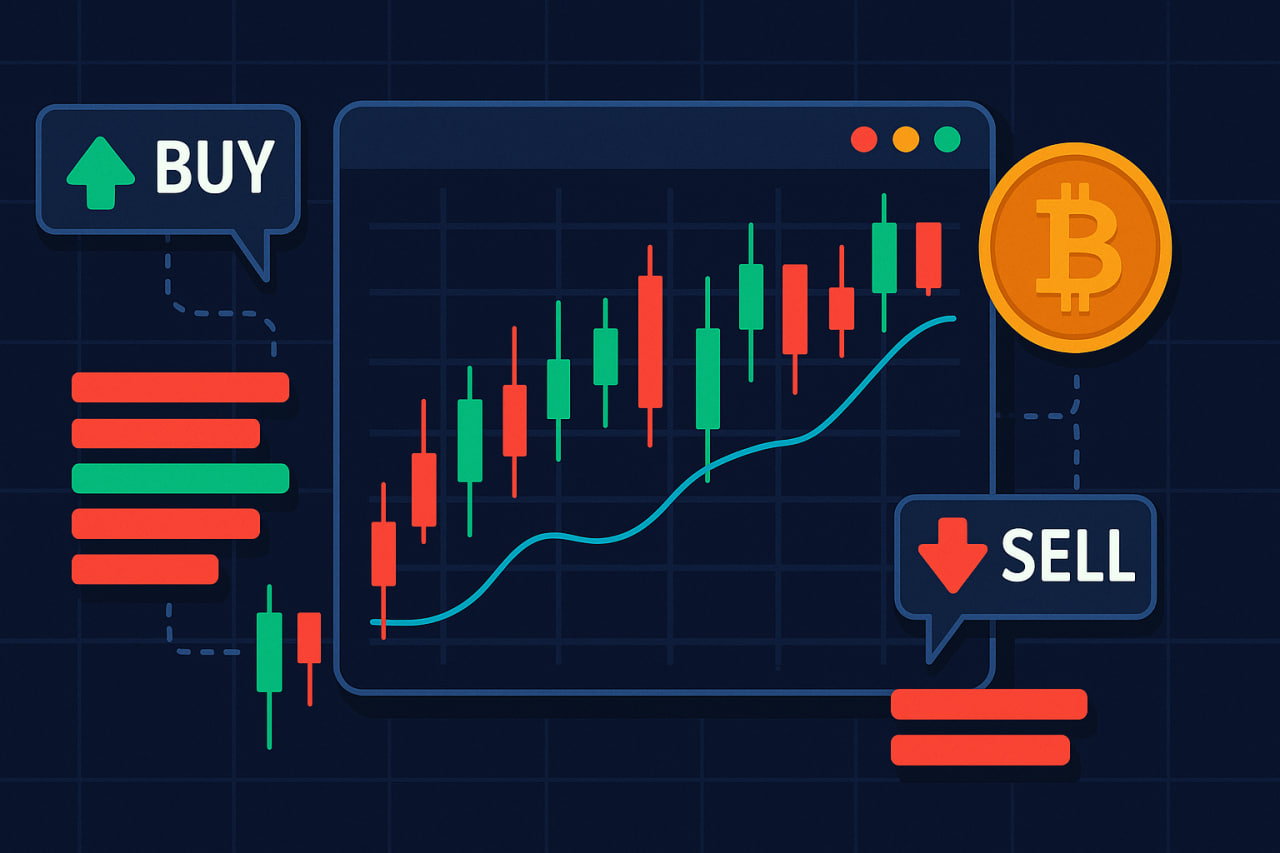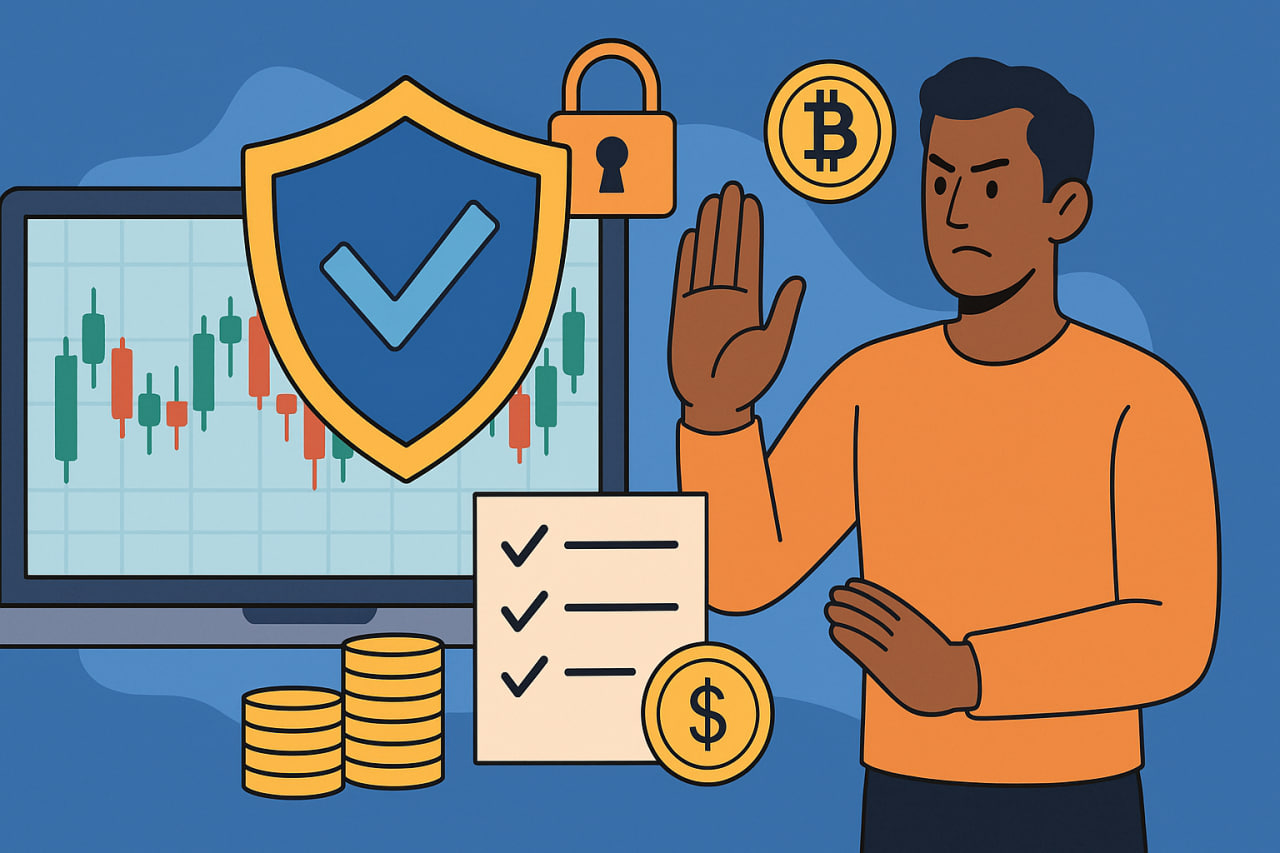Demystifying Crypto Market Spoofing

Contents
- Introduction
- What Is Spoofing in the Crypto Market
- Difference Between Spoofing and Other Manipulations
- Examples of Spoofing on Crypto Exchanges
- Legal Status and Regulation of Spoofing
- How to Detect Spoofing
- Conclusion
Introduction
Manipulation has always been part of financial markets, but in cryptocurrencies, its scale and consequences are particularly noticeable. Traditional exchanges have multi-layered oversight, technical controls, and legal protection for investors. The crypto industry, however, is still in its formative stage, making it more vulnerable to unfair practices.
One such tactic is spoofing in the crypto market — the deliberate placement of large but fake orders in the order book. Its goal is to distort the perception of supply or demand and push other traders to act in the manipulator’s interest. To understand how to protect capital, it is necessary to examine the mechanics of this scheme in detail.
What Is Spoofing in the Crypto Market

Spoofing is a type of cryptocurrency market manipulation in which a trader shows intent to execute a large trade but, in reality, plans to cancel it. This creates a false signal for other participants: they interpret the order as an indicator of future price movement and adjust their behaviour accordingly.
In crypto trading, this approach is especially effective because liquidity is often limited, and many participants rely heavily on the visual data of the order book. As a result, even a single large order can trigger a strong reaction.
How Spoofing Works in Crypto Trading
The mechanism is based on a simple but repeatedly used sequence:
-
Placing a large order that draws the attention of other traders.
-
Creating the illusion of market pressure: a “buy wall” suggests imminent growth, while a “sell wall” implies a drop.
-
Market participants react, opening or closing positions, believing they are predicting a trend.
-
The spoofer executes hidden trades, often in the opposite direction.
-
The fake order is removed, causing a sharp price movement.
Such manipulations amplify volatility and create distorted dynamics that even experienced analysts struggle to interpret.
Difference Between Spoofing and Other Manipulations
To understand the scale of the threat, it is useful to compare spoofing with other schemes used in illegal crypto trading practices:
-
Pump and dump — artificially inflating the price through mass collusion, followed by a rapid sell-off.
-
Wash trading — trading with oneself to generate fake trading volume.
-
Fake orders without repetition — one-time orders without the cyclical pattern of spoofing.
-
Information attacks — spreading false news to alter market expectations.
The key difference of spoofing is that it directly targets the order book and provokes an immediate reaction, without requiring lengthy preparation or coordinated mass actions.
Examples of Spoofing on Crypto Exchanges

There have been several high-profile cases in crypto history where signs of spoofing became the subject of investigations. Sometimes U.S. regulators — such as the SEC or CFTC — uncovered such practices on platforms that traded both digital and traditional assets.
Within the crypto industry, exchanges are gradually implementing systems to track suspicious orders, but the problem remains on low-liquidity platforms. To highlight the differences, here is a comparative table:
| Tactic | Mechanism | Main Goal | Risk Level for Trader |
|---|---|---|---|
| Spoofing | Placing and quickly cancelling large orders | Creating an illusion of demand/supply | High |
| Pump and dump | Mass buying and rapid profit-taking | Temporary price surge | High |
| Wash trading | Trading with oneself | Artificial trading volume | Medium |
| Order book manipulation | False support/resistance levels | Market sentiment pressure | Medium |
This classification underlines that spoofing uniquely combines stealth, immediate impact, and detection difficulty.
Legal Status and Regulation of Spoofing
In U.S. stock markets, spoofing has long been prohibited, carrying heavy fines and even criminal liability. Regulators point out that this practice undermines market integrity and violates the principles of fair competition.
In the cryptocurrency sphere, regulation is still not unified. Some countries apply the same rules to digital assets as to securities, while others leave them in a “grey zone.” Nevertheless, regulators’ stance is tightening: spoofing investigations in crypto have already been recorded, especially in the U.S.
What Spoofing Means for a Trader
For the average trader, the consequences can be quite significant:
-
Financial losses from false order book signals.
-
Disruption of personal trading strategies.
-
Erosion of trust in the exchange and the crypto market as a whole.
-
Involvement in artificially created volatility.
-
Potential legal risks if knowingly engaging in such tactics.
The damage extends beyond direct victims of manipulation to the entire ecosystem, increasing instability.
How to Detect Spoofing

Despite its complexity, there are signs worth watching for:
-
Large orders that clearly stand out from normal trading activity.
-
Orders appear and disappear instantly without execution.
-
Sudden liquidity spikes without any relevant news.
-
Systematic repetition of orders at various price levels.
These signals don’t guarantee detection but can help traders build more cautious strategies.
Ways to Protect Against Manipulation

To reduce vulnerability to spoofing, traders can adopt several approaches:
-
Prefer exchanges that publish transparency reports and cooperate with auditors.
-
Use specialised analytics platforms to monitor order book activity.
-
Compare price and volume movements across multiple trading venues.
-
Avoid active trading in low-liquidity pairs.
These measures help lower exposure to spoofing, though they cannot fully eliminate the risk.
Conclusion
Spoofing in crypto trading is one of the most sophisticated forms of market manipulation. It undermines trust in exchanges, creates false signals for analysis, and increases uncertainty for investors.
As the industry develops, regulatory scrutiny will intensify, and exchanges will implement stricter monitoring algorithms. For traders, the best defence remains understanding the nature of spoofing, recognising its signs, and applying cautious strategies.